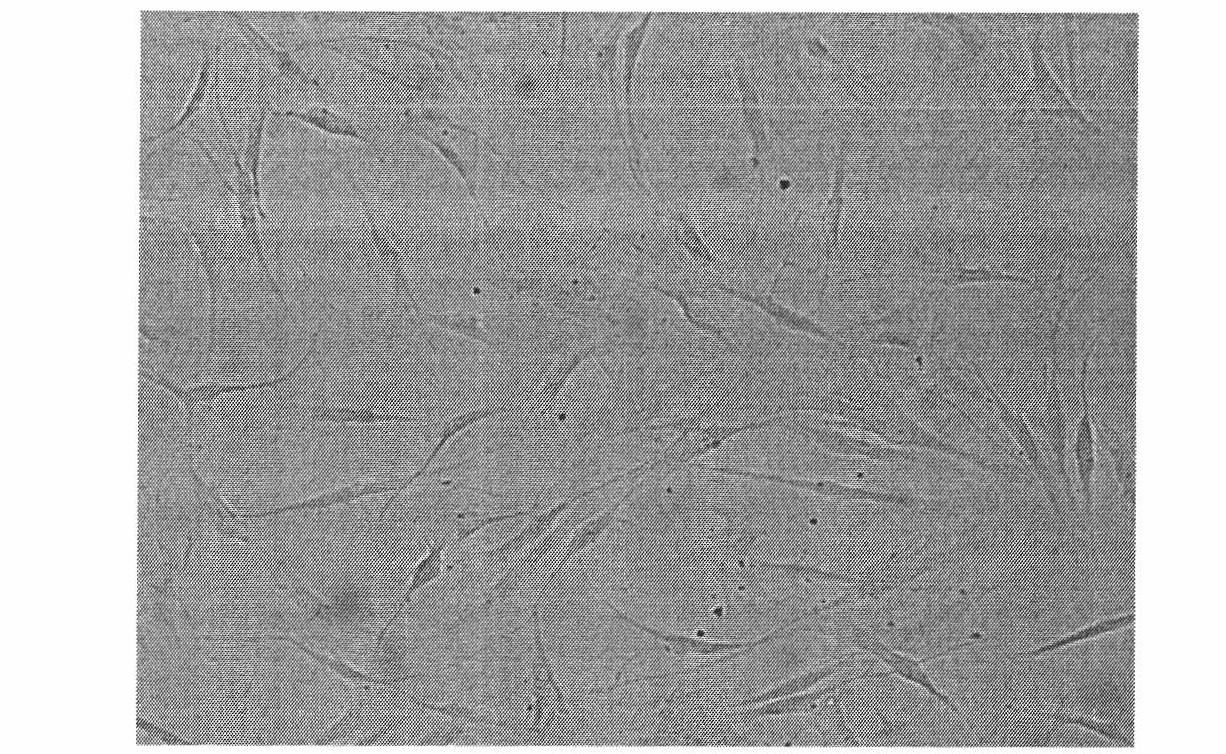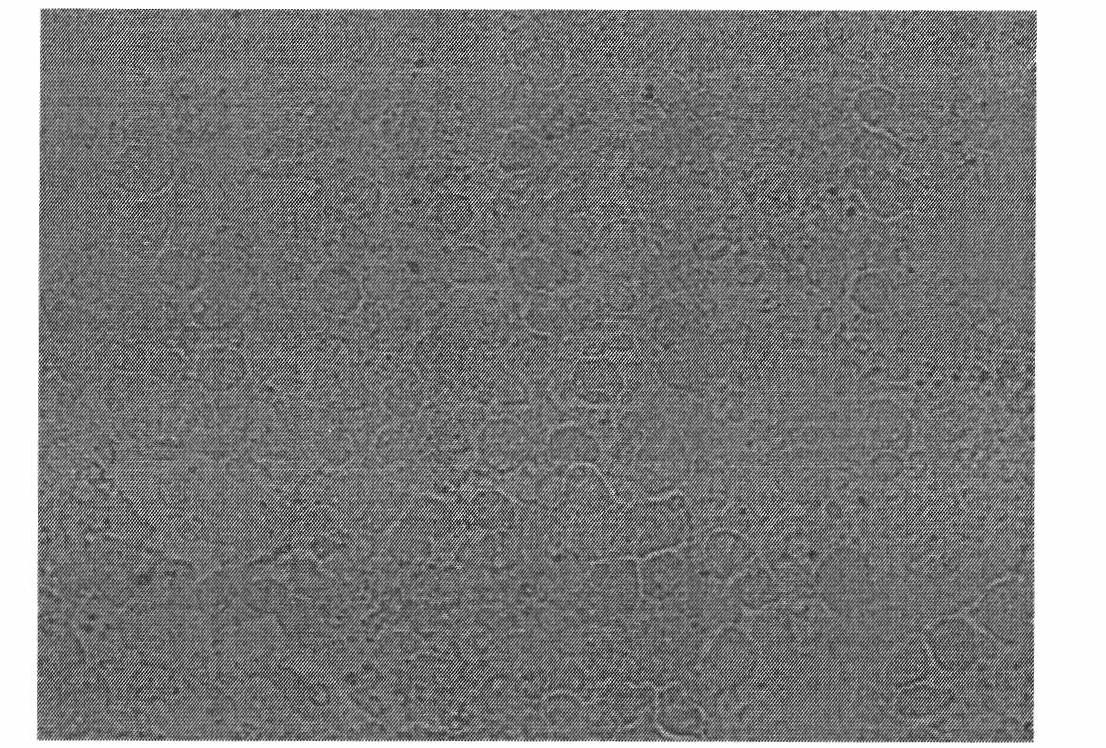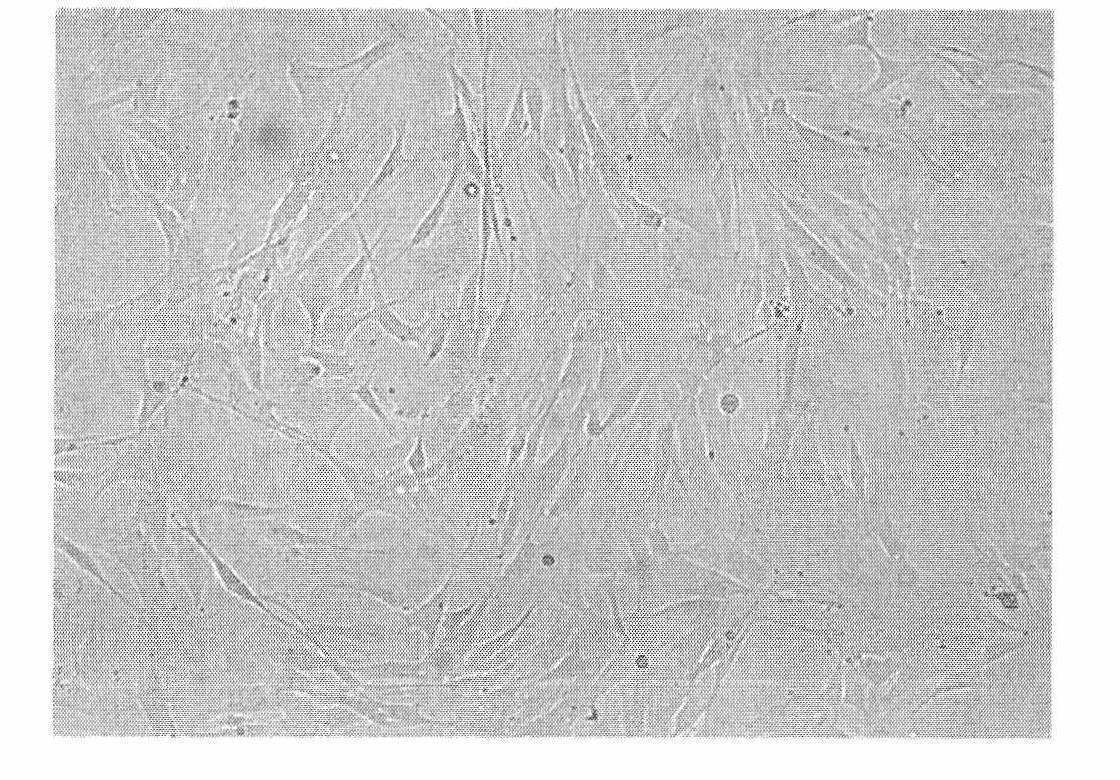Method for separating cells from different tissues
A tissue and source technology, applied in the field of separating cells from different tissue sources, can solve problems such as difficult to grasp the time of digestion, inability to observe tissue digestion, slow cell growth, etc., to achieve high practical application value, easy to quickly grasp, and uniform stress on cells Effect
- Summary
- Abstract
- Description
- Claims
- Application Information
AI Technical Summary
Problems solved by technology
Method used
Image
Examples
Embodiment 1
[0020] Embodiment 1, separation of adipose tissue primary cells
[0021] Taking adipose tissue (the adipose tissue is derived from the tissue taken out in the liposuction operation) as an example, the primary cells of the adipose tissue are separated by the method of the present invention, and the specific method comprises the following steps:
[0022] 1) Add 50mL of liposuction tissue into a sterile 50mL centrifuge tube, centrifuge at 1300rpm for 2 minutes, and suck out the lower liposuction anesthetic after centrifugation;
[0023] 2) Wash the adipose tissue with an equal volume of phosphate-buffered saline (PBS, pH 7.3, Gibcol), centrifuge at 1300 rpm for 2 minutes, suck out the lower layer of washing solution and discard it;
[0024] 3) Add Collagenase IV collagenase (sigma company), and adjust the collagenase concentration to 0.075% (V / V, 0.05%-0.1%), then add 2% (V / V, 1%-3% Yes) BSA 1.5mL (1-2mL is acceptable) and 0.2% (V / V, 0.1%-0.3% is acceptable) penicillin and strep...
Embodiment 2
[0034] Embodiment 2, separation of liver tissue primary cells
[0035] Liver tissue acquisition: Take out a SD rat 2-3 days after birth (purchased from the Animal Experiment Center of the Academy of Military Medical Sciences of the Chinese People's Liberation Army) from the rat basin with a pair of large tweezers, and place it in 0.1% bromogeramine (purchased from Dezhou Lekang Disinfection Products Co., Ltd.) solution for 20-30s, take it out and place it on a foam board, fix the mouse with a needle (position it in a straight line), use another pair of large tweezers to take an iodine cotton ball to wipe the skin, and then rub it with alcohol. For cotton ball deiodination, take a pair of small scissors and tweezers to open the skin, fully tear it apart, then disinfect it with alcohol cotton balls, and open the abdominal cavity to take the liver.
[0036] Then put the removed liver in a round dish with DMEM medium prepared in the following step 1), remove the hemagglutination a...
Embodiment 3
[0049] Example 3. Isolation of primary stromal cells derived from fetal liver tissue
[0050] Taking fetal liver tissue (fetal liver tissue is derived from aborted fetus) as an example, the primary cells of adipose tissue are separated by the method of the present invention. The specific method comprises the following steps:
[0051] 1) Insert two 5mL syringes into DMEM medium (purchased from Gibcol) and Collagenase IV collagenase (purchased from Gibcol) respectively, and add 5mL of DMEM culture solution to the two round dishes respectively.
[0052] 2) Add Collagenase IV Collagenase (Sigma Company) to the organized plate, and adjust the collagenase concentration to 0.1% (V / V, 0.05%-0.1%), then add 3% (V / V , 1%-3% can be) BSA 2mL (1-2mL can be) and 0.3% (V / V, 0.1%-0.3% can be) penicillin and streptomycin (purchased from Gibcol).
[0053] 3) Put the fetal liver tissue mixed with Dispase enzyme (please provide another available collagenase) in a triangular beaker (Indal Keyi Ma...
PUM
 Login to View More
Login to View More Abstract
Description
Claims
Application Information
 Login to View More
Login to View More - R&D
- Intellectual Property
- Life Sciences
- Materials
- Tech Scout
- Unparalleled Data Quality
- Higher Quality Content
- 60% Fewer Hallucinations
Browse by: Latest US Patents, China's latest patents, Technical Efficacy Thesaurus, Application Domain, Technology Topic, Popular Technical Reports.
© 2025 PatSnap. All rights reserved.Legal|Privacy policy|Modern Slavery Act Transparency Statement|Sitemap|About US| Contact US: help@patsnap.com



